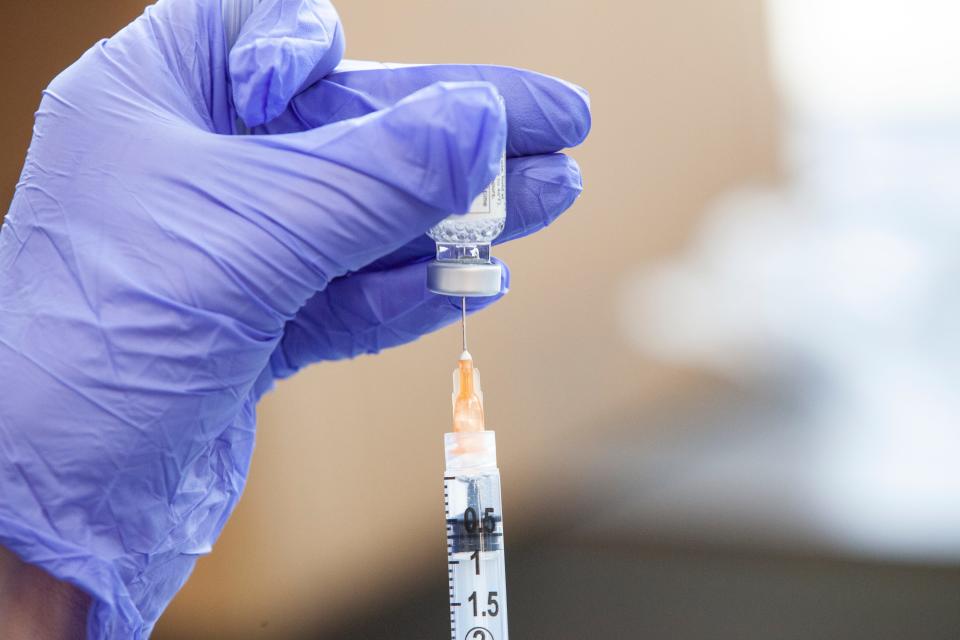We've achieved herd immunity for the measles. Will we ever get there on COVID-19?
These days, everyone is talking about herd immunity. But what actually is it? We are all a part of a larger herd, and when a critical mass of immunity is reached, the contagion slows to a crawl or even a stop. Herd or population immunity is based on how transmissible a pathogen is. If it spreads easily, then a higher percentage of immune hosts are needed to slow it down, until the pathogen runs out of available options. With measles, probably the most easily transmissible respiratory virus, that number is around 95%, and since almost all of us take the vaccine as young children, we achieve it.
So when can we expect to get to herd immunity on COVID-19? First, it depends on how many people have been infected and have developed a natural immune response. Antibody tests project this number to be close to three times higher than reported cases, or about 100 million people. This group provides a substantial blockade to the virus, as long as they're not confronted with a variant to which they're not immune.
Enough immunity to exit the pandemic
Variants have not yet caused significant reinfection in the United States, and we are trying to stay ahead of them by vaccinating people as quickly as possible. This part depends on us and our willingness to be vaccinated. So far, so good, with over 90 million having received at least one dose and over 51 million fully vaccinated. Plus, vaccine administration is accelerating; nearly 3.5 million shots were given Saturday alone. Over 70% of the high risk elderly have received at least one dose, and CDC surveillance shows steep declines in hospitalizations of the elderly in several states.
But we are still nowhere near herd immunity. Keep in mind that the SARS-COV-2 virus, though not nearly as transmissible as measles, has been estimated to have an R0 of 2.5, meaning that for every person who has it, 2.5 others are likely to get it. Several variants, including the UK B117 variant, are even more transmissible and since they are now spreading widely, the R0 is increasing.

So we still have a long way to go. In fact, over the past week, 22 states have experienced a 10% rise in cases due to more gatherings, relaxed restrictions and rapidly spreading variants, with only a third of adults having received at least one dose of a vaccine.
When the current number of vaccinated has doubled, and close to 200 million people have received at least one dose, we should have enough immunity to exit the pandemic. At the current rate of 3 million doses or more a day, a combination of natural and vaccinated immunity should get us there in late June.
Trust in science: Kids can't get COVID shots, but my 12-year-old may already be fully vaccinated
It is looking like President Joe Biden was a visionary when he chose July 4 as a target for return to normalcy.
"After this long hard year, that will make this Independence Day something truly special, where we not only mark our independence as a nation, but we begin to mark our independence from this virus," he said March 11 in his first prime time address.
A nightmare receding into the past
And then over the summer, if all goes well, we can start to vaccinate our children, until by Labor Day the virus recedes into a long national nightmare from our past. I think by bringing the vaccine into doctor's offices like mine, community centers, and churches, we will achieve greater compliance and hopefully, the magic herd immunity number.
We also must also give the public incentives to get vaccinated – make it clear to people that once they are fully vaccinated, they can go to places without risk that they couldn’t go to as freely before. It's how I already feel when I enter a restaurant or a grocery store these days. My unvaccinated son waits in the car while I go into a taco place to pick up our dinner. The day is coming again soon when we will go in together and share a beer at the bar.
Lights, cameras and Zoom preaching: How I kept my church connected during a year of COVID
I expect to still be wearing a mask at my July 4 barbecue, as a precaution. By then, I am hoping that fear of this virus – which has sickened, hospitalized and killed so many – will start to fade. For now, it remains an important reminder of why you must be vaccinated.
A happy summer barbecue will help free us further from the viral fear that traps us. The old-fashioned staples of hot dogs, hamburgers, beer and good cheer, will all be back to help us begin to feel liberated from the awful grip of the virus. Still not quite herd immunity, but close enough to celebrate.
A needle in the arm is a very small price to pay to get us there.
Dr. Marc Siegel, a member of USA TODAY's Board of Contributors and a Fox News medical correspondent, is a professor of medicine and medical director of Doctor Radio at NYU Langone Health. His latest book, "COVID: the Politics of Fear and the Power of Science," was published last fall. Follow him on Twitter: @DrMarcSiegel
You can read diverse opinions from our Board of Contributors and other writers on the Opinion front page, on Twitter @usatodayopinion and in our daily Opinion newsletter. To respond to a column, submit a comment to letters@usatoday.com.
This article originally appeared on USA TODAY: COVID-19 herd immunity: Get vaccinated so we can all exit the pandemic

